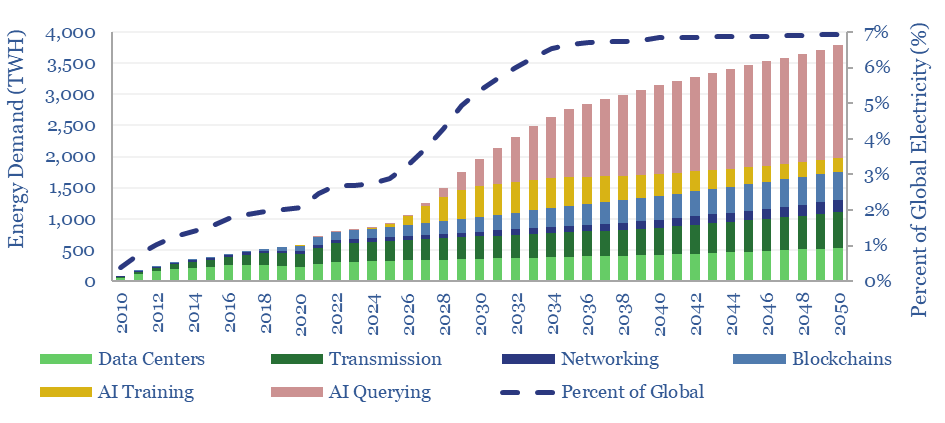In recent years, the explosive growth of artificial intelligence (AI) and the increasing reliance on massive data centers have become pivotal to the advancement of technology. However, this progress comes with a significant environmental cost, as these technologies require vast amounts of electricity, thus straining global power supplies and exacerbating climate challenges.
Unprecedented Energy Consumption
Data centers, the backbone of computing infrastructure that houses servers and supports internet and AI operations, are becoming substantial energy hogs. According to the International Energy Agency (IEA), “the electricity consumed by data centers globally will more than double by 2026 to more than 1,000 terawatt hours,” roughly the annual energy consumption of Japan. This growth isn’t just a projection but a current reality, with data centers in the U.S. alone expected to consume 6% of the nation’s electricity by 2026, up from 4% in recent years.
Elon Musk, CEO of Tesla, Neuralink and SpaceX, recently highlighted that AI development had shifted from being “chip constrained” to “electricity supply” constrained. This bottleneck reflects broader concerns across the tech industry about the sustainability of its energy usage. Musk also owns artificial intelligence start-up X.AI.

The Environmental Impact
The environmental implications of these developments are profound. Data centers and AI are not only power-intensive, but also contribute significantly to carbon emissions. Fengqi You, an energy engineering professor at Cornell University, expressed concerns about the rapid growth of these facilities, stating, “This is something I’m concerned about.”
Arman Shehabi, a staff scientist at Lawrence Berkeley National Laboratory, emphasized the importance of integrating renewable energy sources with data centers to mitigate their environmental impact. He suggested that “how we address that growth will set the stage of how we address the growth of other economic sectors over the coming decades in a way that’s sustainable.”

Challenges and Solutions
The strain on electricity supply is further complicated by the geographical and infrastructural limitations of current energy grids. Daniel Golding, chief technology officer at Appleby Strategy Group, pointed out the practical challenges: “At some point the reality of the [electricity] grid is going to get in the way of AI.” There is an undeniably pressing need for updated regulations and technological advancements to improve energy efficiency in data centers.
Google, to its credit, recently invested heavily in a geothermal-powered data center. A first, but hopefully not the last, for the industry.
To address these issues, companies like Nvidia assert that their products, particularly GPUs (graphics processing units), can enhance the energy efficiency of data centers. A Nvidia spokesperson claimed, “Replacing conventional servers with GPU-accelerated systems will reduce, not increase, energy use in datacenters.” They further highlighted the role of AI in enhancing systems across various industries to be more energy efficient.

Regulatory and Corporate Responses
As the demand for energy continues to rise, some regions have begun to push back against the unchecked expansion of data centers. Places like Ireland and the Netherlands have set limits on new data center developments, while others like Singapore have lifted previous moratoriums. In Northern Virginia, a major hub for data centers, local power provider Dominion Energy paused new connections to analyze and upgrade its network to handle the surging demand.
Corporations are also exploring innovative solutions like onsite power generation and even nuclear energy, with Microsoft appointing a director of “nuclear development acceleration” to explore these options.
More To Discover
- The UK Has A Biomass Problem: Sustainability Questions Threaten Green Energy Goals In Biomass Industry
- Fusion Milestone Achieved: Experiment Generates More Energy Than It Consumes
- The United Arab Emirates Just Took Over Entire Forests in Africa To Greenwash Their Way To Carbon Credits
- Fish Farms Intended to Rescue Wild Salmon Are Ironically Leading to Their Decline
Conclusion: Balancing Innovation with Sustainability
The dual challenge of meeting the energy demands of AI and data centers while combating climate change is becoming increasingly apparent. As we venture further into an era dominated by digital and AI technologies, the need for sustainable practices is more critical than ever. Stakeholders across the board—from government regulators to tech giants—must collaborate to ensure that the digital revolution does not come at the expense of the planet’s health. The steps we take now to integrate sustainability into the backbone of our technological infrastructure will determine the future of both our digital and natural worlds.



















